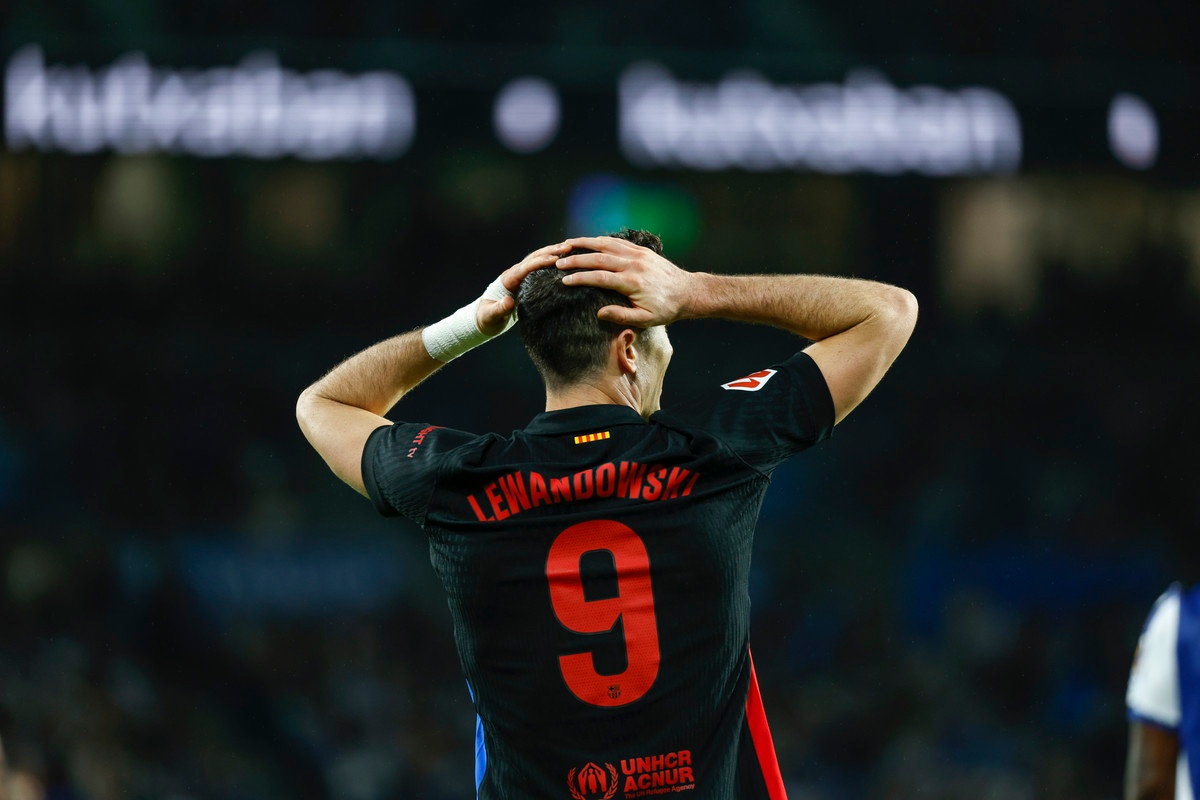Exploring Football Strategies: Offensive vs. Defensive Play

Football, known as "the beautiful game," is not just about physical prowess but also about the strategies and tactics employed by teams to outwit their opponents.
5 months ago
Two fundamental aspects of football strategy are offensive and defensive play. Understanding the nuances of these strategies is crucial for appreciating the complexity and beauty of the game. This article delves into the core elements of offensive and defensive strategies in football, exploring their significance, key components, and how they shape the outcomes of matches.
Offensive play in football is all about creating scoring opportunities and putting pressure on the opponent's defense. It involves a combination of individual skills, teamwork, and tactical maneuvers designed to penetrate the opposition's defensive lines and score goals. Here are the key components of offensive play:
The formation a team adopts significantly influences its offensive capabilities. Common attacking formations include the 4-3-3, 3-5-2, and 4-2-3-1. These formations emphasize forward play, with more players positioned in advanced roles. The positioning of players is crucial, as it determines the areas of the field where the team can create and exploit space.
Maintaining possession of the ball is a fundamental aspect of offensive play. Teams that dominate possession can dictate the tempo of the game and wear down their opponents. Passing accuracy and speed are vital in keeping possession and advancing the ball. Short, quick passes can break through tight defenses, while long passes can exploit gaps and catch the opposition off guard.
Player movement off the ball is essential for creating scoring opportunities. Forwards and midfielders must constantly move to find space, make runs behind the defense, and create passing lanes. Creativity in the final third, such as dribbling, quick one-twos, and through balls, can unlock stubborn defenses. Players like Lionel Messi and Kevin De Bruyne excel in this aspect, using their vision and skill to create chances for themselves and their teammates.
Set pieces, including corners, free kicks, situs togel, and throw-ins, are critical components of offensive play. Teams practice set-piece routines to maximize their chances of scoring. Well-executed set pieces can catch the defense off guard and provide opportunities to score from dead-ball situations. Players with exceptional delivery, like David Beckham in his prime, are invaluable for their ability to create scoring chances from set pieces.
Defensive formations, such as the 4-4-2, 5-3-2, and 4-5-1, are designed to provide a strong defensive structure. These formations ensure that players are positioned to cover key areas of the pitch and prevent the opposition from finding space. A well-organized defense makes it difficult for the opponent to create clear scoring opportunities.
Effective marking and tackling are essential for disrupting the opponent's play. Defenders must stay close to their assigned players, preventing them from receiving the ball or making runs. Tackling, both standing and sliding, is used to dispossess opponents and regain possession. Players like Virgil van Dijk and Sergio Ramos are renowned for their marking and tackling abilities, often neutralizing the opposition's key attackers.
Pressing is a defensive tactic where players apply immediate pressure on the opponent in possession. This can force errors, disrupt the opposition's rhythm, and win back possession in advanced areas. Teams like Liverpool under Jürgen Klopp are known for their high-intensity pressing game. Closing down involves defenders quickly reducing the space and time the opponent has on the ball, making it difficult for them to make effective plays.
Defensive transitions refer to the shift from offense to defense when possession is lost. A quick and organized transition is crucial to prevent counter-attacks. Players must quickly get back into their defensive positions, and the team must collectively work to regain its shape. The ability to transition effectively can thwart the opposition's attempts to capitalize on turnovers.
Counter-attacking is a strategy that combines offensive and defensive elements. Teams defend compactly, inviting the opponent to commit players forward, and then exploit the space left behind with quick, incisive attacks. This strategy can be highly effective against teams that dominate possession but are vulnerable to fast breaks. Leicester City’s title-winning season in 2015-16 under Claudio Ranieri is a prime example of effective situs toto counter-attacking football.
Possession-based play, often associated with teams like FC Barcelona under Pep Guardiola, emphasizes controlling the game through ball possession. While primarily offensive, this strategy also serves a defensive purpose by denying the opponent possession and thus reducing their opportunities to attack. It requires high levels of technical skill and tactical discipline.
Teams like Atletico Madrid under Diego Simeone are known for their defensive solidity combined with an offensive threat. They focus on a strong defensive structure and are dangerous on the break. This approach requires players who are disciplined defensively but also capable of quick, effective attacking play.
Offensive and defensive strategies are the heart of football tactics. The ability to execute these strategies effectively can determine the outcome of matches and the success of teams. While offensive play aims to create and capitalize on scoring opportunities, defensive play focuses on preventing the opposition from scoring.
Offensive play in football is all about creating scoring opportunities and putting pressure on the opponent's defense. It involves a combination of individual skills, teamwork, and tactical maneuvers designed to penetrate the opposition's defensive lines and score goals. Here are the key components of offensive play:
The formation a team adopts significantly influences its offensive capabilities. Common attacking formations include the 4-3-3, 3-5-2, and 4-2-3-1. These formations emphasize forward play, with more players positioned in advanced roles. The positioning of players is crucial, as it determines the areas of the field where the team can create and exploit space.
Maintaining possession of the ball is a fundamental aspect of offensive play. Teams that dominate possession can dictate the tempo of the game and wear down their opponents. Passing accuracy and speed are vital in keeping possession and advancing the ball. Short, quick passes can break through tight defenses, while long passes can exploit gaps and catch the opposition off guard.
Player movement off the ball is essential for creating scoring opportunities. Forwards and midfielders must constantly move to find space, make runs behind the defense, and create passing lanes. Creativity in the final third, such as dribbling, quick one-twos, and through balls, can unlock stubborn defenses. Players like Lionel Messi and Kevin De Bruyne excel in this aspect, using their vision and skill to create chances for themselves and their teammates.
Set pieces, including corners, free kicks, situs togel, and throw-ins, are critical components of offensive play. Teams practice set-piece routines to maximize their chances of scoring. Well-executed set pieces can catch the defense off guard and provide opportunities to score from dead-ball situations. Players with exceptional delivery, like David Beckham in his prime, are invaluable for their ability to create scoring chances from set pieces.
Defensive formations, such as the 4-4-2, 5-3-2, and 4-5-1, are designed to provide a strong defensive structure. These formations ensure that players are positioned to cover key areas of the pitch and prevent the opposition from finding space. A well-organized defense makes it difficult for the opponent to create clear scoring opportunities.
Effective marking and tackling are essential for disrupting the opponent's play. Defenders must stay close to their assigned players, preventing them from receiving the ball or making runs. Tackling, both standing and sliding, is used to dispossess opponents and regain possession. Players like Virgil van Dijk and Sergio Ramos are renowned for their marking and tackling abilities, often neutralizing the opposition's key attackers.
Pressing is a defensive tactic where players apply immediate pressure on the opponent in possession. This can force errors, disrupt the opposition's rhythm, and win back possession in advanced areas. Teams like Liverpool under Jürgen Klopp are known for their high-intensity pressing game. Closing down involves defenders quickly reducing the space and time the opponent has on the ball, making it difficult for them to make effective plays.
Defensive transitions refer to the shift from offense to defense when possession is lost. A quick and organized transition is crucial to prevent counter-attacks. Players must quickly get back into their defensive positions, and the team must collectively work to regain its shape. The ability to transition effectively can thwart the opposition's attempts to capitalize on turnovers.
Counter-attacking is a strategy that combines offensive and defensive elements. Teams defend compactly, inviting the opponent to commit players forward, and then exploit the space left behind with quick, incisive attacks. This strategy can be highly effective against teams that dominate possession but are vulnerable to fast breaks. Leicester City’s title-winning season in 2015-16 under Claudio Ranieri is a prime example of effective situs toto counter-attacking football.
Possession-based play, often associated with teams like FC Barcelona under Pep Guardiola, emphasizes controlling the game through ball possession. While primarily offensive, this strategy also serves a defensive purpose by denying the opponent possession and thus reducing their opportunities to attack. It requires high levels of technical skill and tactical discipline.
Teams like Atletico Madrid under Diego Simeone are known for their defensive solidity combined with an offensive threat. They focus on a strong defensive structure and are dangerous on the break. This approach requires players who are disciplined defensively but also capable of quick, effective attacking play.
Offensive and defensive strategies are the heart of football tactics. The ability to execute these strategies effectively can determine the outcome of matches and the success of teams. While offensive play aims to create and capitalize on scoring opportunities, defensive play focuses on preventing the opposition from scoring.







Comments